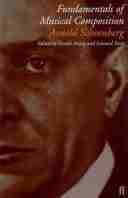Composition is selective improvisation – Igor Stravinsky. In 15 seconds the difference between composition and improvisation is that in composition you have all the time you want to decide what to say in 15 seconds, while in improvisation you have 15 seconds – Steve Lacy.
Learning to improvise is a big undertaking. Not only must you become proficient on an instrument, you also need find something musical to play on that instrument. That’s no small task!
But don’t get discouraged just yet, many musicians have learned to improvise before you and many more will in the years to come. Having the correct mindset as you start your journey, however is vital in realizing your goals. In this day and age you can have all the study materials and learning aids in the world, but if you don’t know how to use them, they’re useless.
So where are you going to find this mindset?
In your musical journey so far you might have noticed that improvisation is often compared to musical composition, and for good reason. Creating a solo over a chord progression is essentially composing music in the moment.
As you improvise, you’re using your ears, instrumental technique, and musical language to create new melodies in real time. All of the skills that are essential for composition are also necessary for improvisation. You must create a theme, develop that theme, follow the contours of the harmony, and send a musical message to the listener.
Therefore it’s only logical to look to composers and the study of composition for inspiration. For example, let’s take a look at a passage from the introduction to Arnold Schoenberg’s Fundamentals of Musical Composition:
No beginner is capable of envisaging a composition in its entirety; hence he must proceed gradually, from the simpler to the more complex. Simplified practice forms, which do not always correspond to art forms, help a student to acquire the sense of form and a knowledge of the essentials of construction. It will be useful to start by building musical blocks and connecting them intelligently.
These musical blocks (phrases, motives, etc.) will provide the material for building larger units of various kinds, according to the requirements of the structure. Thus the demands of logic, coherence and comprehensibility can be fulfilled, in relation to the need for contrast, variety and fluency of presentation.
Certainly invaluable advice for any aspiring composer, yet the same could easily be applied to the task of learning improvisation simply by substituting the word “composition” with the words “improvised solo.”
Below we’ll apply each of these key phrases to the process of learning jazz improvisation.
Spontaneity vs. Structure
In any art form in which creativity is the main source of construction, there exists a duality between spontaneity and predetermined structure.
The artist, regardless of chosen medium, must produce new material with an inspired vision or creative freedom, however to achieve this feat, a concrete method and conscious structure is required.
Herein lies the gap that every creative person must bridge. For the improviser this means the divide between the mechanics of music (instrumental technique/theory) and the creativity of music (expressive elements/feel/phrasing). Technique is useless without a musical vision and a musical vision cannot be realized without technique.
The irony of improvisation is that freedom and creativity in performance requires hours of structured preparation in the practice room.
“It usually takes me more than three weeks to prepare a good impromptu speech.”~ Mark Twain
When you first attempt improvising, you’ll want to be creative right away. You might even expect to close your eyes and instantaneously create long flowing lines over a chord progression as if you were struck by divine inspiration. It’d be akin to the Oracle at Delphi or a clairvoyant fortune teller, musical lines would be instantly channeled from the beyond.
Sorry to break it to you, but this is a fantasy…yet this is exactly how many players approach the practice of improvisation.
To the outsider, improvisation appears spontaneous, intuitive, and even strangely magical. A musician on stage creating music out of thin air with no rehearsal or preparation. This one-sided perception can throw many beginners off track and contributes to the “you either have it or you don’t” mentality when it comes to taking a solo.
The audience hears the end result, but nobody sees the hours of practice and study behind the scenes in the practice room.
“In theory there is no difference between theory and practice. In practice there is.”~Yogi Berra
In practice improvisation is not all creative intuition and freedom, to succeed an organized and structured approach is necessary. Remember, the players that sound the best in performance are the ones that have worked the hardest in the practice room.
“No beginner is capable of envisaging (an improvised solo) in its entirety“
No one is born a natural improviser. In fact, no one naturally picks up an instrument and starts playing with a great sound or flawless technique. These are all skills that must be developed over time, day after day in the practice room.
Understand that improvising is going to be challenging the first time you attempt to create a solo. As you begin working on the fundamentals of improvisation and eventually progress to more challenging tunes, you’re going to be asking yourself: Why isn’t this working? Why is this so hard? Why isn’t improvising easy?
This is natural.
To improve, you must get over the mindset that you can simply solo without any preparation. Just as a beginning composer isn’t going to complete a symphony on their first try, a novice improviser isn’t going to sound very good the first time they play over a chord progression.
It takes hours of trial and error and focused practice. Remember, start with simple concepts and gradually get more complex.
Utilizing “simplified practice forms“
We all start with the same goal – sounding great when we improvise, however this is a goal that can’t be accomplished in one sitting. It must be broken down into smaller, manageable pieces that can be tackled individually in the practice room.
To begin, identify the essential elements of this skill you’re trying to learn (improvisation) and start working on them one by one.
This is where the idea of a simplified practice form comes in. Over time these small steps will build up to some noticeable improvements in your playing. Instead of tackling everything at once in the practice room, the fastest way to see improvement is by mastering these singular exercises.
Keep in mind that when you practice improvisation, you’re not always going to be improvising. In fact you will often be doing the exact opposite: focusing on one small piece of information and repeating it over and over again until it’s mastered.
As Schoenberg states in the passage above, these “simplified practice forms” do not always correspond to the art form itself. The practice of improvisation does not always correspond to the performance of improvisation.
Practice must be structured and focused, a goal must be set, and specific exercises must be practiced to achieve this goal. Improvisation practice isn’t turning on a play-a-long and “jamming” over a tune for an hour, it’s taking one small piece of that tune and ingraining it.
So what exactly are “simplified practice forms” when it comes to learning improvisation? Here are a few examples:
Start with one scale:
Focusing on instrumental technique in your practice will give you the physical foundation to play the ideas that you’re hearing in your head. This technique, once ingrained, will enable the musical and creative aspects of improvisation.
A major scale is a great place to start:
We often play a scale up and down and call it a day, however something as simple as a major scale has unlimited possibilities when you incorporate rhythm, articulation and direction.
Take this Major scale, minor, diminished scales, whole tone, etc. Practice them in 3rds, 4ths, 5ths, 6ths, triads and 7th arpeggios. Practice each interval pattern in all 4 directions. Use different articulations, accents and slurs to create different rhythmic variety. The possibilities on one scale are endless.
Eventually do this exercise with every scale (Major, minor, diminished, altered, etc.) in all 12 keys. Check out this article for more on approaching scales in your practice routine.
Start with one chord:
A Major chord, a minor chord, a dominant chord…
These sounds are the building blocks of any tune that you’ll play over.
Take a Major 7th chord:
Now glancing at this chord, ask yourself: What do you have to play over this chord?
If you don’t have any answers, you’re going to run into some problems as an improviser. As with language, if you don’t know any words, you won’t be able to speak.
Where are you going to find “stuff” to play? Transcribing. Start by transcribing and developing some language in all 12 keys for every chord that you’ll encounter. For more on this idea check out this article.
Study the relationships between chords:
After learning language over a one chord, the next step is to study the relationships between chords.
Learning the harmonic relationships within a ii-V7-I is a great place to start.
Focus on V7 to I:
Focus on ii to V7:
And finally, focus on the entire ii-V7-I:
As you work on each progression, ask yourself the same question: What do I have to play over a ii-V? What are my options from V7 to I? Do I know any ii-V-I lines?
Again if you don’t have an answer, you’ll have nothing to play. For every harmonic situation you need options to play, you need somewhere to start, you need to be hearing something.
Also be sure to study other common chord progressions
The progression of these simplified practice forms should go like this: Scale/Technique -> One Chord -> Chord Progression -> Tune
A scale will give you the technique to approach a chord and language over a chord will allow you to access a chord progression. Most beginners tackle the entire tune right away when they haven’t even mastered the chord progression, or a single chord…or even a scale.
Focusing on these simplified progressions and individual chords will give you the skills that you need to start tackling entire tunes in a productive way. Start simply and then connect them intelligently and musically.
“Building musical blocks“
After technique, ear training and some serious listening, the foundation of improvisation is built on language: the language you transcribe and the language that you develop on your own.
Transcribing language will lead to longer lines in your solos, an improved instrumental sound, and expressive elements to your playing. You’ll be speaking the language of the music that you’re playing with the correct accent, rather than stumbling around like a tourist and struggling to communicate the simplest phrases.
The process is very similar to learning to speak: you learn words and short phrases, then you piece them together until you’re communicating and constructing original ideas on the spot.
These transcribed lines and phrases are your musical building blocks.
For every chord or chord progression that you encounter, you need to have some language that you can play over it. Ideally you want to have 10 pieces of language for every harmonic situation. Remember, there’s a difference between language and licks.
As Schoenberg states above, your musical composition (in this case your improvised solo) must be logical, coherent and comprehensible. This is achieved by studying and transcribing great players.
Like composition, improvising is not just about scales and chords and theory. It has to flow, it has to be musical, it has to have a purpose and connect with the listener.
Music cannot be produced without a certain level of proficiency, yet technique in and of itself is not music. Transcribing is the bridge that will link these two musical poles and create the creative foundation of your playing.
Steps that lead to improvisation
Your mindset or practice philosophy can make all the difference in your success as an improviser. By following the above steps you will naturally find yourself learning and improvising more effectively.
- Get rid of the “you have it or you don’t” mentality. Anyone with a musical affinity and dedication can learn to improvise.
- Understand that, while improvisation is a creative pursuit, much of the practice that leads to a great solo is structured, organized, and focused.
- No one improvises right away – every player that sounds great has put in hours of work in the practice room. Take time and stay the course.
- Practice the fundamentals and simplified forms to see the best results.
- Transcribed language is the building blocks of your playing. Remember that you’re learning a language here and you need to develop key phrases to speak it successfully.
Seeing these ideas in a list seems logical and straight-forward, however it’s not intuitive, especially for beginners. I remember as I was learning to improvise that I was always confused by the players or instructors that would answer my questions about soloing in esoteric or philosophical answers.
“Play what you hear…make a musical statement…tell your own story…add more motion to your lines…think in longer phrases…”
I was so worried about the music theory and technique of improvising that these phrases made no sense. I wanted to know exactly which notes to play over each chord, I wanted licks that would make me sound great over those chord progressions.
This is the difference between someone stuck behind the barrier of technique and someone thinking about the creative aspects of improvising. When you’re stuck with the fundamentals and haven’t transcribed any language, you can only think about the nuts and bolts of improvisation (scales, chords, and arpeggios). The creative aspects of improvisation like shaping a phrase and playing from a conceptual are unreachable from this mindset.
The eventual goal is to shift from this technical mindset (what scale do I use, how do I finger that note, what is the chord there?) to a creative mindset (what am I hearing/feeling?).
Once you put in the work to master your technique (or the simplified practice forms of improvisation) things will start to make a lot more sense. You’ll be much more creative when you don’t have to think about scales and chords, but can actually hear them. This is what Charlie Parker was talking about when he said:
“You’ve got to learn your instrument. Then, you practice, practice, practice. And then, when you finally get up there on the bandstand, forget all that and just wail.”
The missing link is getting the right practice mindset and overcoming the barrier of technique. We all have the potential to be creative and all of us can tell a story with music, you just need to put in the work to enable this music to come out of your instrument…then forget it all and just play.

















